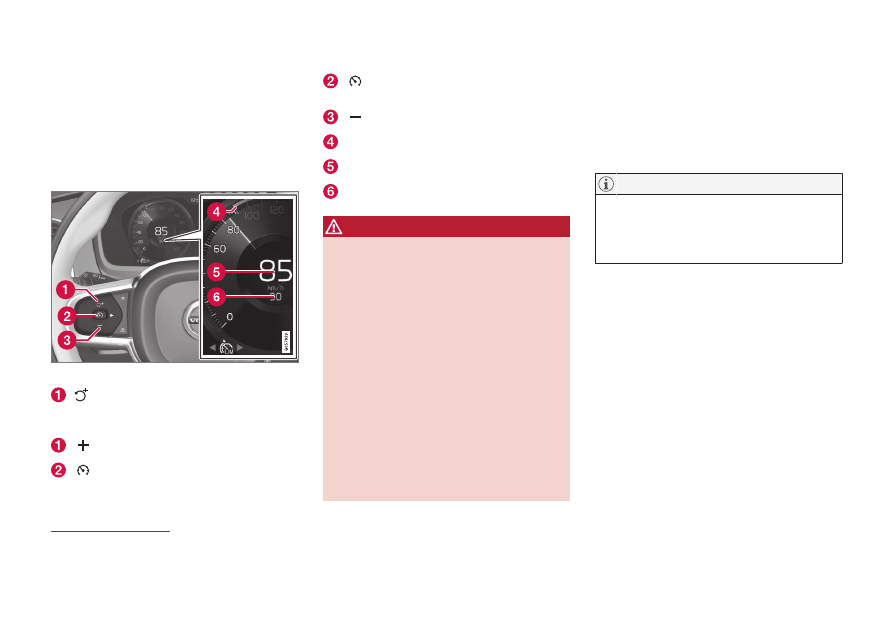Volvo V90 Twin Engine (2018 year). Manual - part 16

DRIVER SUPPORT
* Option/accessory.
281
Speed limiter
*
A speed limiter (SL
6
) can be likened to a reverse
cruise control - the driver regulates the speed
using the accelerator pedal but is prevented
from accidentally exceeding a pre-selected/set
maximum speed by the speed limiter.
Overview
Buttons and symbols for functions
7
.
: Activates the speed limiter from
standby mode and resumes stored maximum
speed
: Increases the stored maximum speed
: From standby mode - activates the
speed limiter and stores current speed
: From active mode - deactivates/
changes the speed limiter to standby mode
: Reduces stored maximum speed
Marker for stored max speed
The car's current speed
Stored maximum speed
WARNING
•
The Speed Limiter function is supple-
mentary driver support intended to facili-
tate driving – it cannot handle all situa-
tions in all traffic, weather and road condi-
tions.
•
The driver must always pay attention to
traffic conditions and take action if the
Speed Limiter is not maintaining a suita-
ble speed.
•
The Speed Limiter is not a substitute for
the driver's attention and judgement. The
driver is always responsible for ensuring
the car is driven in a safe manner, at the
appropriate speed, with an appropriate
distance to other vehicles, and in accord-
ance with current traffic rules and regula-
tions.
Limitations
On steep downhill gradients the speed limiter’s
braking effect may be inadequate and hence the
stored maximum speed may be exceeded. In this
case, the driver is alerted by the message
Speed
limit exceeded
in the driver display.
A text message that the maximum speed is
exceeded will be activated if the speed has
been exceeded by at least 3 km/h
(approx. 2 mph).
Related information
•
Activating and starting the Speed limiter
(p. 282)
•
Deactivating/reactivating the Speed Limiter
(p. 283)
•
Managing speed for the Speed limiter
(p. 282)
•
Switching off the speed limiter (p. 284)
•
•
Activating/deactivating the automatic speed
limiter (p. 286)
•
Changing the tolerance for the Automatic
speed limiter (p. 287)
6
Speed Limiter
7
NOTE: The illustration is schematic - details may vary depending on car model.